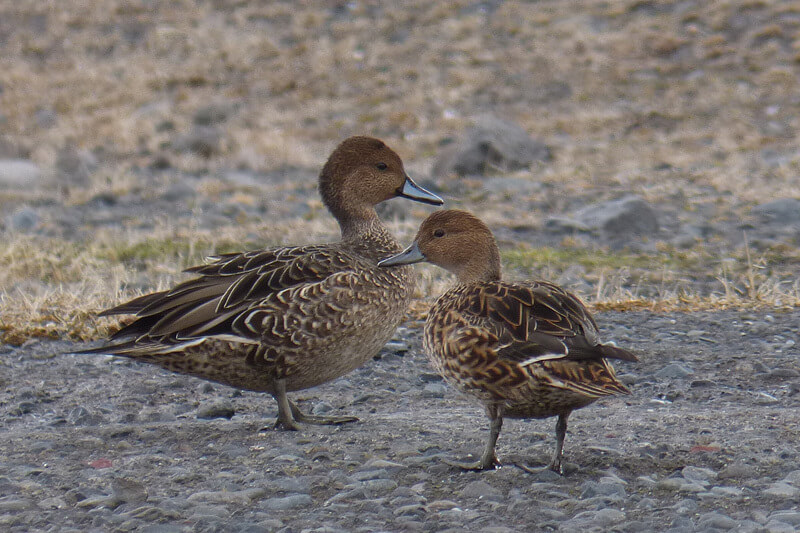Eaton’s Pintail

Scientific Name
Anas eatoni
Alternative Names
Southern pintail, Kerguelen pintail (A. e. eatoni), Crozet pintail (A. e. drygalskii)
Measurements
| Feature | Male | Female |
|---|---|---|
| Body Length | 35–45 cm | 35–45 cm |
| Wingspan | 65–70 cm | 65–70 cm |
| Weight | 430–502 g | 400–500 g |
Status
Vulnerable (IUCN). Population stable but threatened by predation from invasive species such as feral cats and rats.
Identification
A small pintail resembling a female northern pintail but smaller and uniformly brown. Both sexes have similar plumage, with brownish bodies and cinnamon underparts. Males have a green speculum and slightly longer central tail feathers, while females show a brown speculum. Juveniles are similar but more streaked below.
Voice
Males produce a soft proop-proop whistle. Females give a quiet, higher-pitched quack similar to but lighter than that of the northern pintail.
Diet
Feeds mainly on small crustaceans, aquatic invertebrates, and seeds. Occasionally forages in elephant seal wallows.
Distribution
Endemic to the Kerguelen and Crozet Islands in the southern Indian Ocean. Rare vagrants have been recorded on the Prince Edward Islands.
Habitat
Breeds around freshwater lakes, ponds, marshes, and pools during summer. In winter, moves to coastal bays when freshwater freezes over. Seeks cover in dense vegetation or caves during molt.
Breeding
Breeding season runs from November to March. Nests are placed in grass or tussock near water, lined with moss and soft down. The species is flightless during post-breeding molt, making it vulnerable to predators.
Wintering
Migrates locally from inland freshwater habitats to coastal bays and inlets during winter months.
Conservation
Threatened primarily by invasive predators, especially cats and rats. Brown skuas prey heavily during molt. Conservation efforts include predator control, though translocation to new islands (such as Île Amsterdam) has failed. Continued monitoring is essential to ensure population stability.
